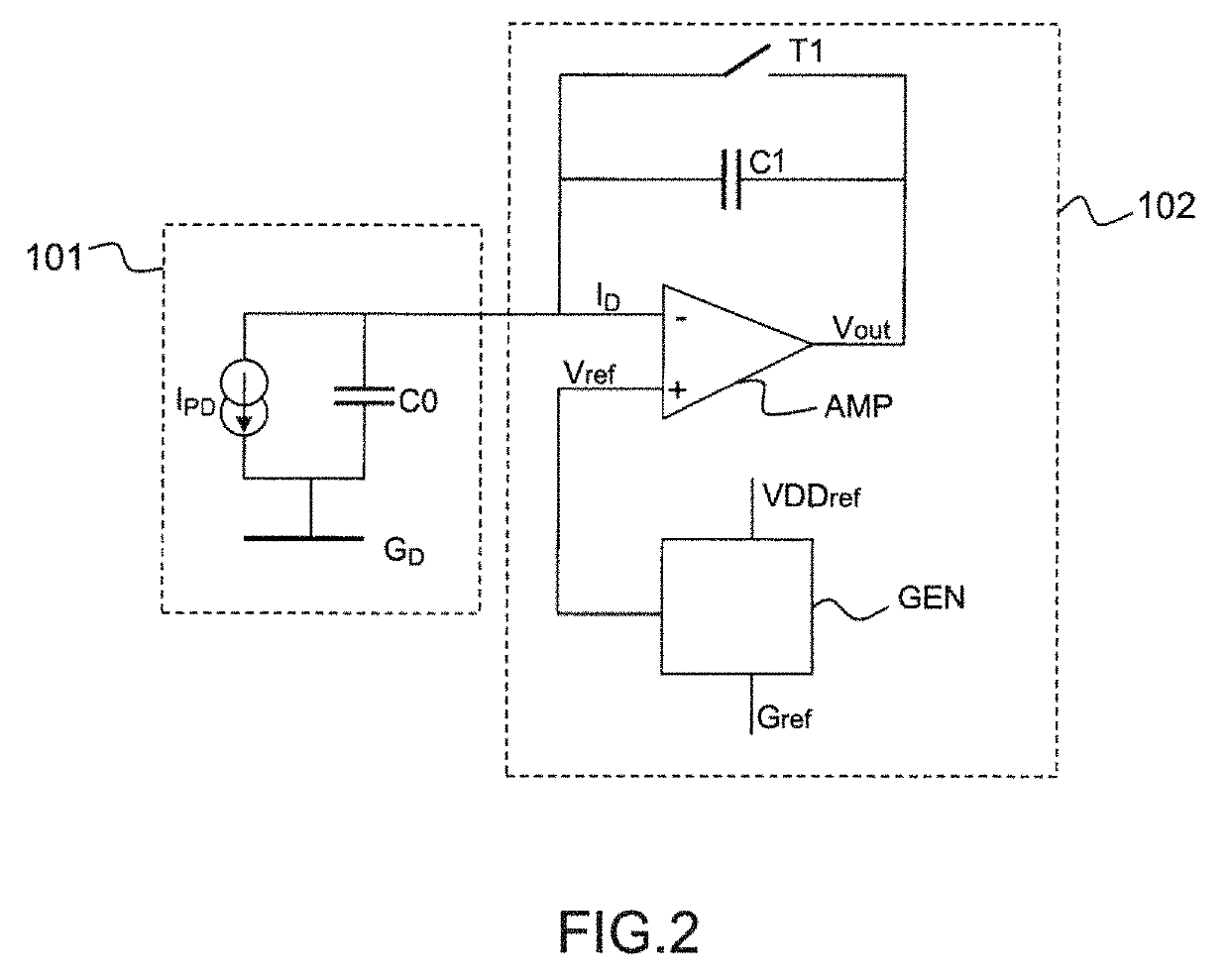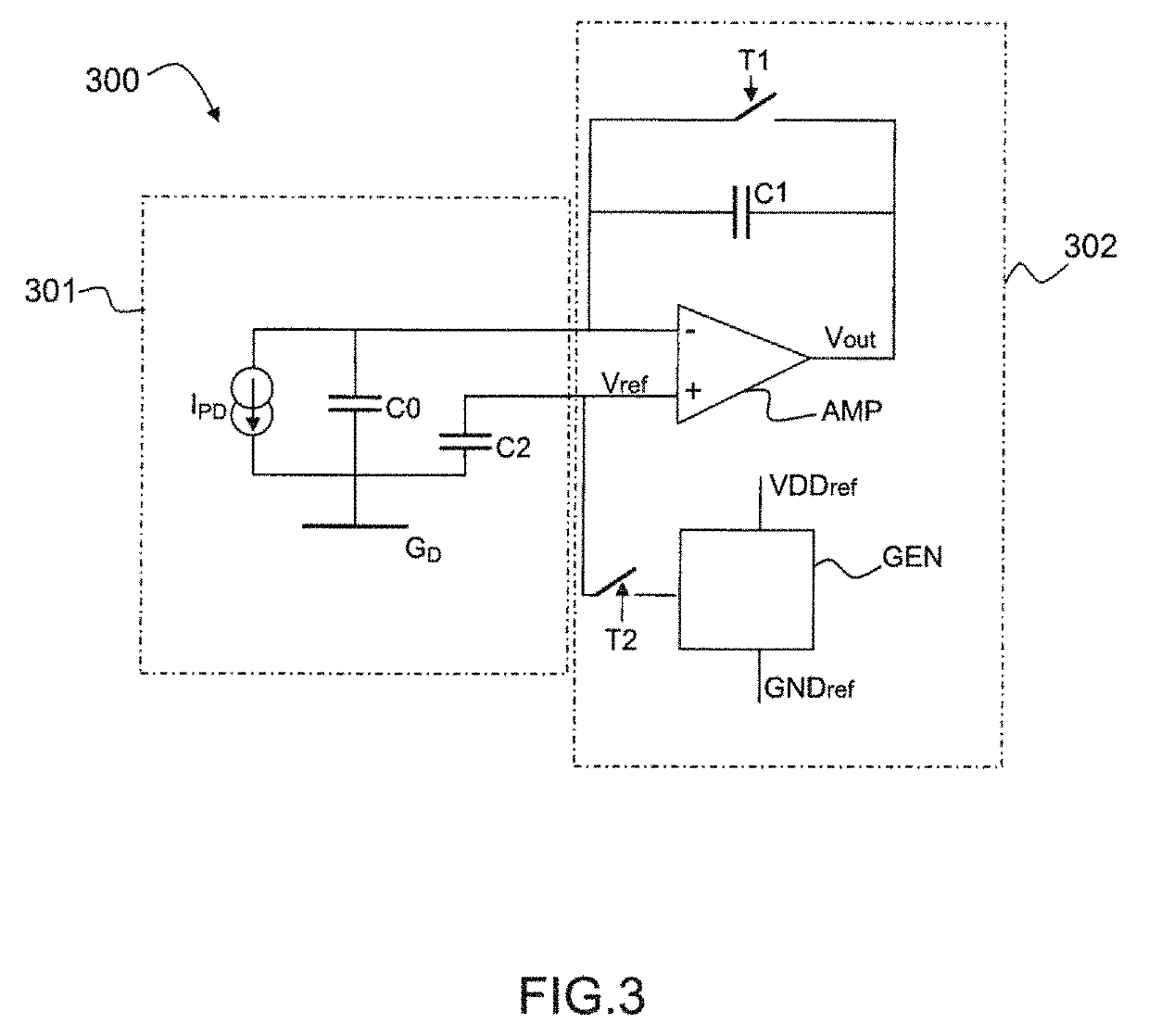X-ray detection circuit for a dental radiology sensor
a detection circuit and radiology technology, applied in the field of medical imaging, can solve the problems of untimely detection threshold, output signal, and inability to obtain reliable and rapid detection of x-rays with circuits, and achieve the effect of reducing detection thresholds
- Summary
- Abstract
- Description
- Claims
- Application Information
AI Technical Summary
Benefits of technology
Problems solved by technology
Method used
Image
Examples
Embodiment Construction
[0032]FIG. 1a shows a functional schematic of a circuit for detecting x-rays for a dental radiological sensor. FIG. 1b illustrates, via a plurality of timing diagrams, the general operation of the circuit.
[0033]A circuit for detecting x-rays mainly comprises a set 101 of photodiodes that are able to receive a flux of x-rays and to convert it into a current I that is delivered to a first input of a transimpedance amplifier 102. Depending on the type of photodiodes 101 used, the current I is directly or indirectly generated by the photodiodes. In particular, the current I is indirectly generated when the radiological sensor uses a material layer called a scintillator that converts, beforehand, the x-rays into visible rays.
[0034]A voltage supply, originating from an external source, is delivered to a second input of the transimpedance amplifier 102, which is clocked by a clock Cl. The amplified signal Vout_trans is then transmitted to a first input of a comparator 103, which receives a...
PUM
 Login to View More
Login to View More Abstract
Description
Claims
Application Information
 Login to View More
Login to View More - R&D
- Intellectual Property
- Life Sciences
- Materials
- Tech Scout
- Unparalleled Data Quality
- Higher Quality Content
- 60% Fewer Hallucinations
Browse by: Latest US Patents, China's latest patents, Technical Efficacy Thesaurus, Application Domain, Technology Topic, Popular Technical Reports.
© 2025 PatSnap. All rights reserved.Legal|Privacy policy|Modern Slavery Act Transparency Statement|Sitemap|About US| Contact US: help@patsnap.com



